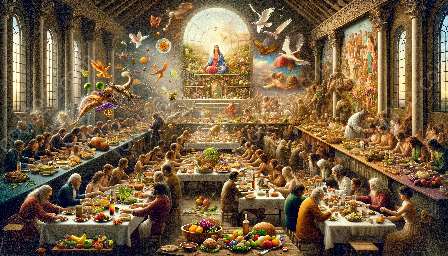Introduction: Food has always been a crucial element in shaping the national or regional identities of different cultures and societies. This intricate relationship between food and identity is influenced by social structures, cultural practices, and historical contexts, creating a rich tapestry of culinary traditions that reflect the diversity and uniqueness of each community.
Food and National or Regional Identities: The connection between food and national or regional identities goes beyond mere sustenance; it serves as a powerful symbol of cultural heritage and collective memory. Each cuisine carries a distinct flavor profile, cooking techniques, and traditional dishes that are deeply rooted in the history and identity of a particular region or nation.
For example: In Italy, pasta is not just a dish but an emblem of Italian identity, representing centuries-old culinary expertise and regional diversity. Similarly, the traditional use of spices and aromatic flavors in Indian cuisine reflects the deep-rooted cultural and historical influences of the subcontinent.
Food and Social Structures: The production, consumption, and sharing of food are intrinsically linked to social structures within a community. Food serves as a social currency, shaping and reinforcing societal relationships, hierarchies, and cultural norms.
For instance: In many East Asian cultures, communal dining practices such as hot pot or family-style meals not only promote the sharing of food but also strengthen familial bonds and social cohesion. Similarly, in Western societies, food etiquette and dining rituals often reflect social status and hierarchy, influencing the way people interact and socialize.
Food Culture and History: The richness of a region's food culture is often a reflection of its historical trajectory, culinary exchanges, and cultural encounters. Through the lens of food, one can uncover the intricate tapestry of human history, migration patterns, trade routes, and cultural exchanges that have shaped the global culinary landscape.
For example: The fusion of African, European, and Indigenous culinary traditions in the Americas illustrates the complex historical narratives of colonization, slavery, and cultural assimilation. Similarly, the spice trade routes of the ancient world not only transformed global economies but also revolutionized culinary practices and flavor profiles across continents, leaving a lasting imprint on food cultures.
Conclusion: The relationship between food, national or regional identities, social structures, and history is a dynamic and transformative force that continues to shape our collective understanding of cultural diversity and heritage. By exploring the intricate interplay between food and these elements, we gain a deeper appreciation for the profound impact of food on the fabric of human society and the richness of our shared culinary heritage.

